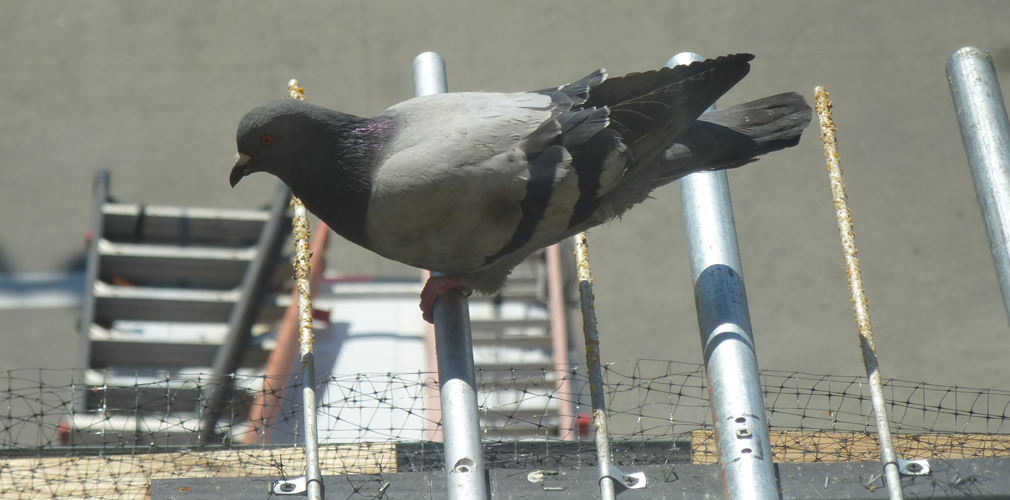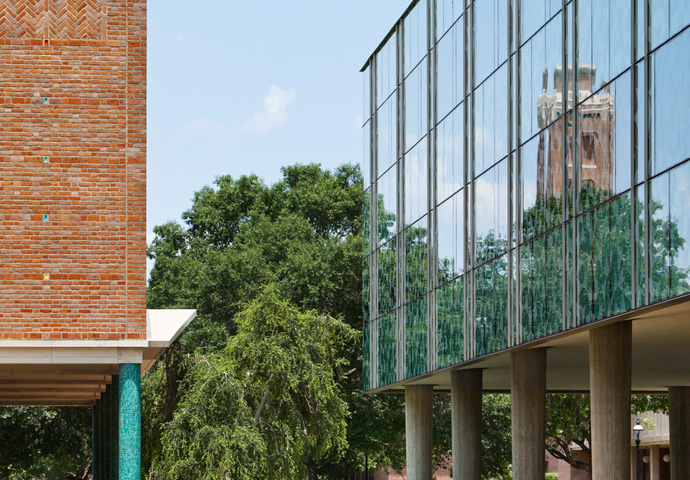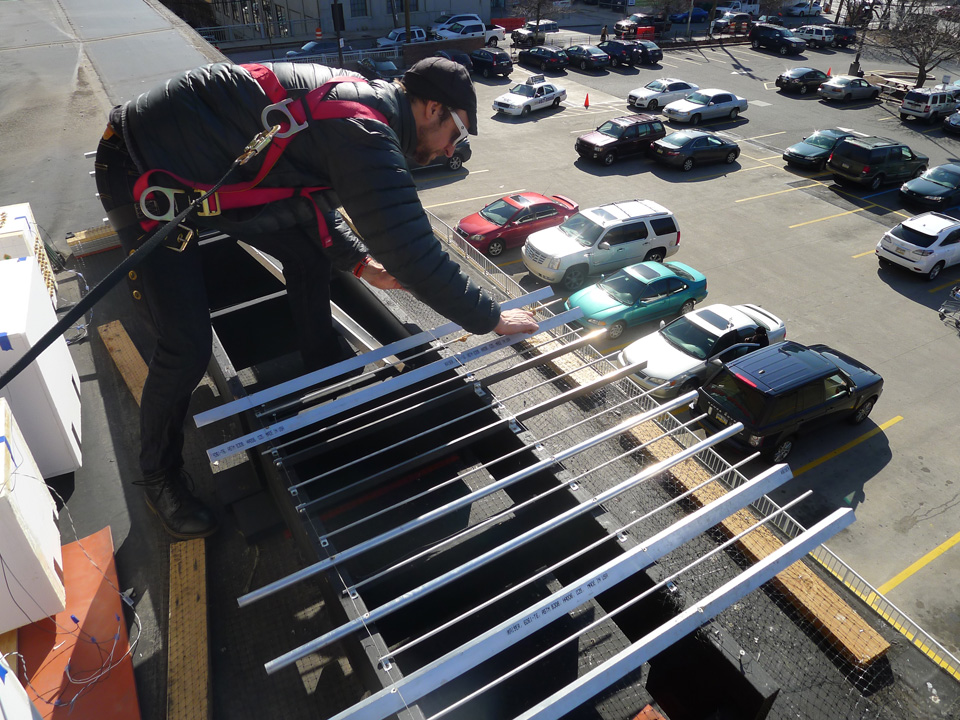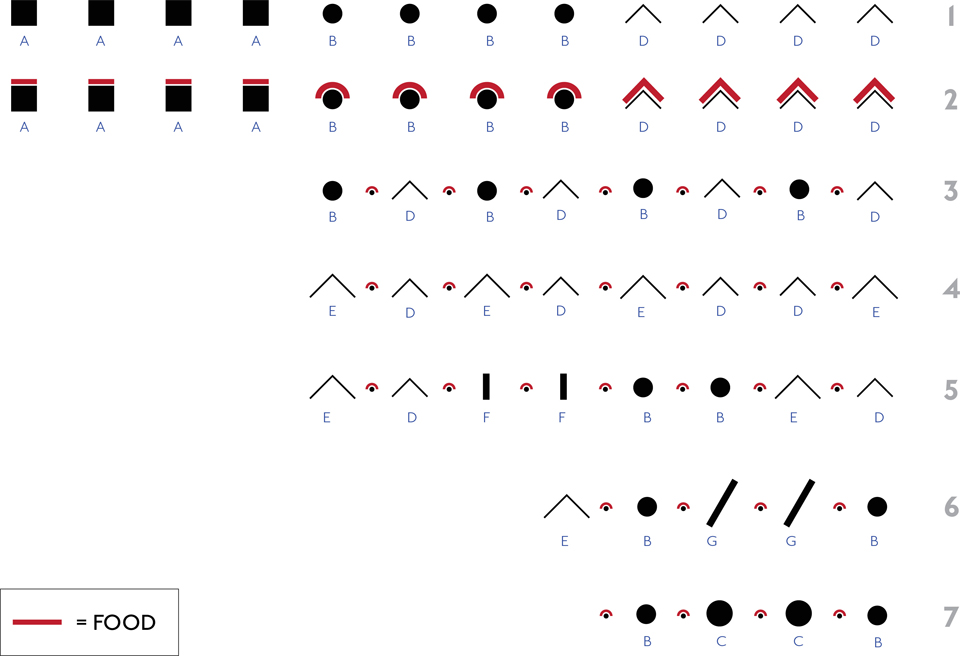How can we mitigate the risks to bird species associated with striking building facades, and how can we reduce the presence of roosting birds on building surfaces?
Glass buildings can be a risk to birds who mistake the reflection of trees and sky for open space.
© Michael Moran/OTTO
In 2008, we became aware that a number of birds were striking the glass façade of one of our buildings on a university campus. It appeared that song birds, during their fall migration, were becoming confused by the reflections of trees on the surface of the building. The north-facing glazing that was receiving the majority of strikes was particularly reflective, and investigations revealed that a number of birds were roosting in a nearby tree. When they went foraging for food in close proximity, they were mistaking the reflection they saw in the glass building for the next closest tree.
Research on preventing bird strikes was scarce, so we undertook an extensive study of the issue at buildings with transparent or reflective surfaces, as well as strategies to mitigate the problem. Solutions fell into two categories: exclusion of birds from the strike site, and modification of the glass surface. We knew we wanted to avoid cutting down the tree. Instead, we found a non-toxic chemical treatment that could be applied to the tree once a year during the fall migration to prevent birds from roosting there, in turn preventing them from flying into the glass façade of the building.
But the discovery of this problem—and the incidence of bird strikes at buildings with glass envelopes—caused us to make a change in our practice. We instituted a review of projects during the design phase to minimize bird strikes and to prevent roosting in proximity to glass buildings. The process taught us that collision with glass is an important bird conservation issue, and that architects, builders, and owners can make moderate adjustments with significant impact.
Bird Denial Prototypes
We built a one-to-one scale mockup of design elements for a building canopy that were identified as primary risks for bird roosting in order to conduct a real-world test of the design outside our office.
In 2013, we undertook a building project with a canopy that posed a potential risk for attracting bird roosting. After a review of guidelines and best practices for bird roosting mitigation during the design phase, we identified several primary risk areas in the scheme. Although the literature suggested “designing out” desirable bird roosting features to mitigate these risks, the available studies tended to be quite narrow in scope, making it difficult to ascertain how undesirable bird species may respond to the tectonics of the actual elements proposed for the design, given that their specific geometries and material characteristics were divergent from the setups of previous scientific studies.
In order to better inform our design decisions, we built a one-to-one scale mockup of the proposed design elements identified as primary risks to perform a real-world test of the design outside our office. We anticipated that the results would allow us to gauge exactly the extent to which the current design needed to mitigate problematic bird roosting.
Three prototypes were constructed to assess the mitigating performance of two separate building assemblies. Two simulated the canopy to evaluate the roosting potential of the extruded metal shapes in the roof, and the third tested the effectiveness of a roosting denial device proposed for the facade's support structure. The prototypes were presented on the ledge of our studio building, and bird behavior was recorded via video camera, photography, and observation over the course of several weeks.
We evaluated the roosting potential of various extruded metal shapes by studying birds' reactions to them in the constructed mockup.
As a result of this study, an element of the canopy was indeed determined to be vulnerable to roosting. However, we found that roosting could be deterred through the placement of a single bird wire, which would sufficiently limit nuisance birds from accessing the area. Additionally, the study showed that a round geometry (as compared to square, angle, or bar shapes) for the metal extrusions of the canopy provided the greatest challenge for birds and would likely minimize their attraction as potential roosting sites. Pigeons in our study struggled to land due to the curvature of the metal tube and the slippery finish. However, no single geometry was found to be entirely inaccessible to birds.
Testing of the prototypes allowed the design team to identify and deploy effective exclusionary design strategies to mitigate bird roosting risks, keeping birds off sensitive areas of the building and landscape. Elimination of such areas also reduces risks of bird strikes at the building itself.






